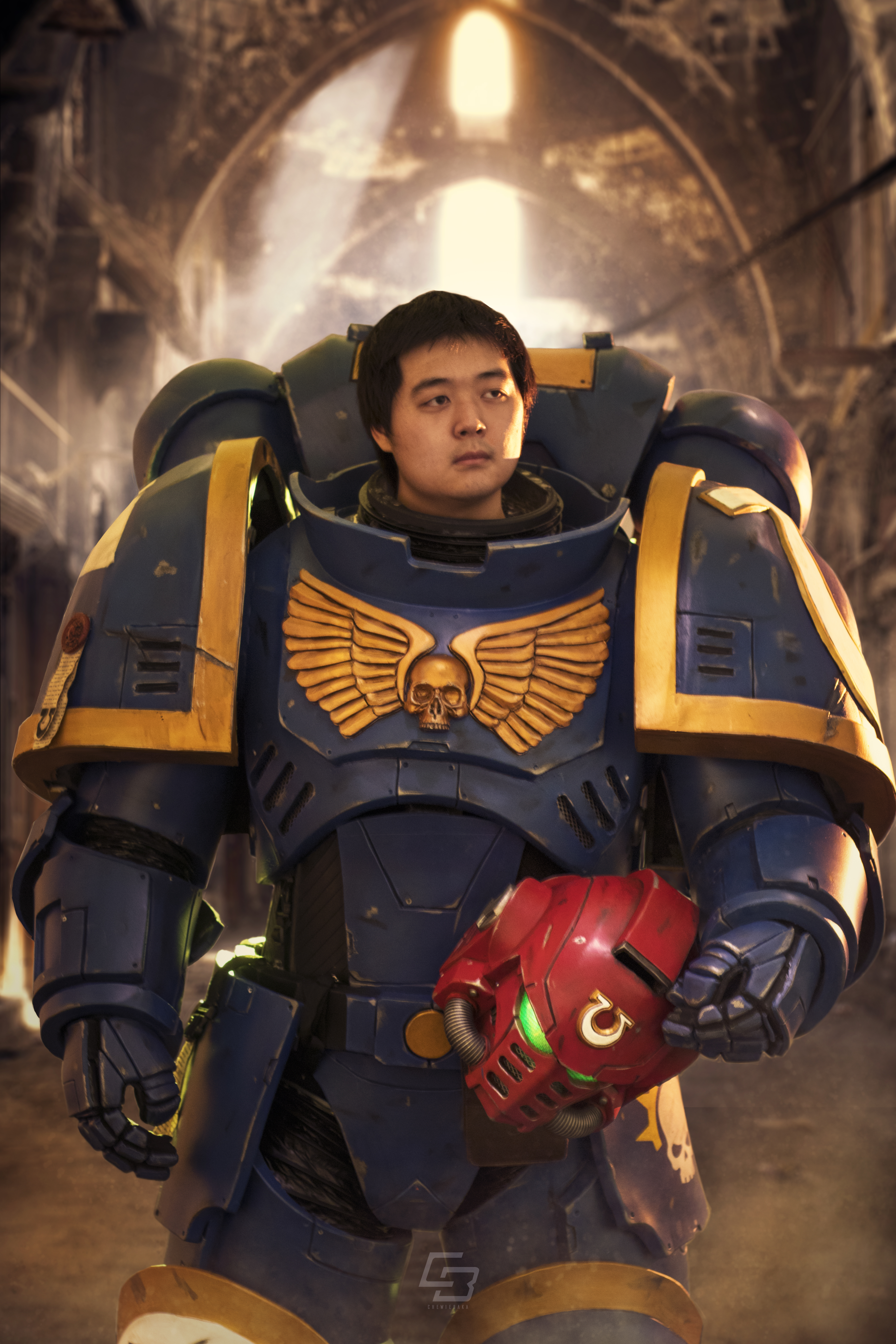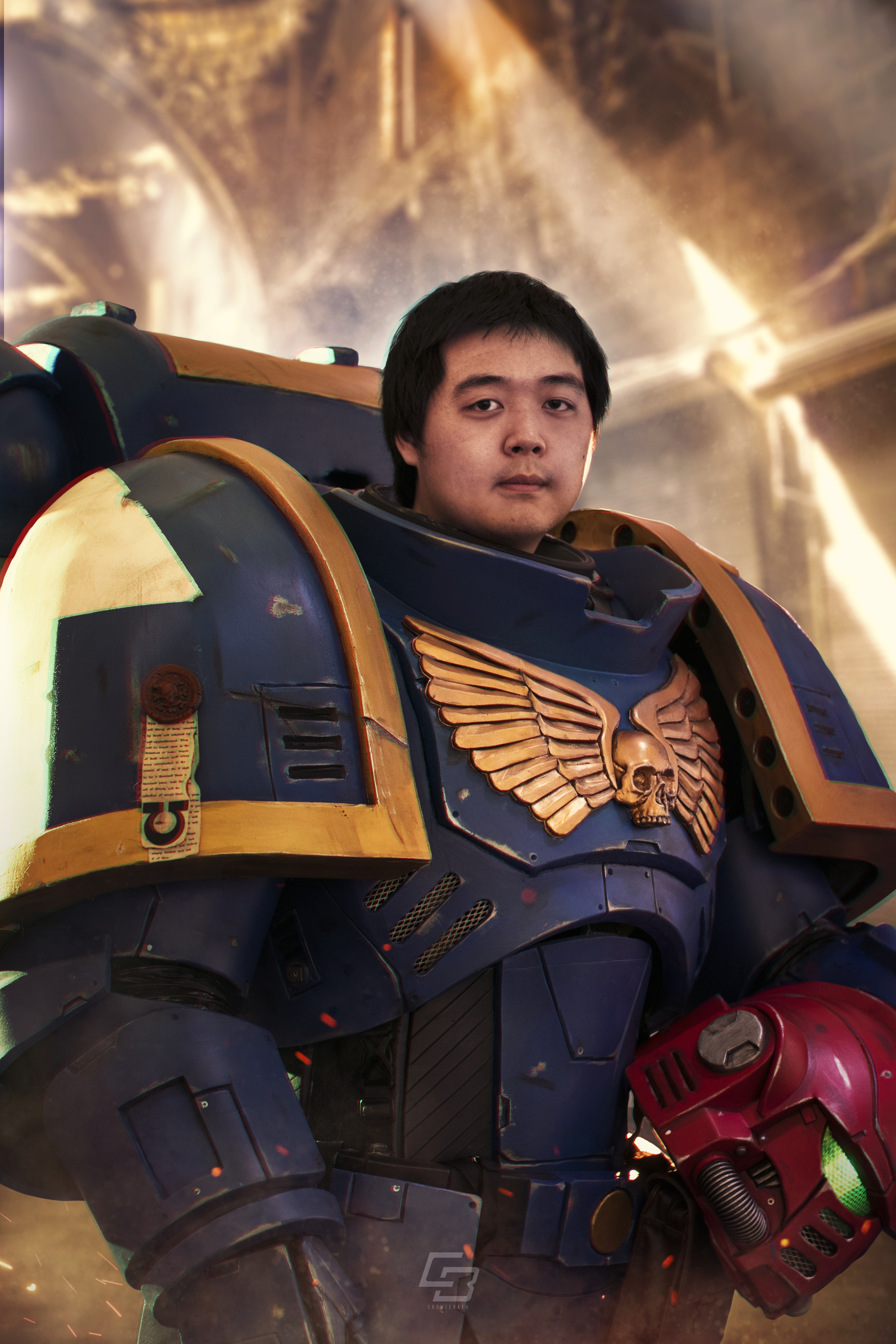Check out this Primaris Space Marine cosplay
Complete with cooling fan.

"I'm a sucker for the good guys" Jeremy says of his Primaris Ultramarine cosplay. "Not that there are any 'good guys' left in the 40K universe, but that's what high-school me thought of the Ultramarines at the time and it kind of stuck."
He's right that Warhammer 40,000 isn't divided along traditional good and evil lines, but of the good guys it doesn't have the Primaris come close. They're a step above the already transhuman Space Marines, genetically engineered over 10,000 years to be better, stronger, and resistant to corruption to reinforce the Marines in their darkest hour. The Ultramarines chapter are the first to be reinforced, which has been part of the recent Dark Imperium storyline. "Nowadays, the Ultramarines find themselves very close to the center of all of the new lore that Games Workshop has been putting out," Jeremy says. That's what made him want to devote three months of his spare time to constructing a suit of power armor.
Jeremy had previously cosplayed in Spartan armor and Pharah's security chief skin, which gave him some understanding of "structures math" and internal motors. "The Space Marine was a lot more straightforward since foam is super light, but the centerpiece of the suit is more or less the cooling fan and shoulder rotation bearings. I believe the most unique part of this particular set of power armor is the 3D printed shoulder bearing that allows for full rotation of the arm, rather than hanging the shoulder armor off of a top hinge like a bell."

Being able to wear the armor for hours at a time at a convention—he finished it with one day to spare before taking it to Katsucon—ventilation was important. The backpack has a fan and a battery that runs it for five hours, providing enough airflow to keep him cool. "In the end I actually found that when left outside with the fan on, I actually started to get kind of chilly in the armor!"
The finished armor is mostly high density polyethylene foam, which he sealed with plasti-dip and painted. "I spent way too much money and too many weekends on miniature wargaming, but I wouldn't know much if anything about making things like costumes were it not for the tabletop game. The only reason why I'm able to paint at all is because of days of practice I've had painting hundreds of little space marines and guardsmen."
Making a life-size recreation of something designed for tabletop miniatures meant filling in a lot of gaps. "I had a general look," he says, "but inflating this thing to seven feet tall meant that I'd be adding a lot of space that I'd need to fill with detail that the minis just don't have at 1.5" tall." He looked to artwork on fan forums for additional detail. "In the end, I'd say that I drew bits and pieces of inspiration from over 50 pieces of art, sort of incorporating neat little details like panel lines, access ports, and other small greeblies to get the final look I was looking for."

Jeremy doesn't play tabletop Warhammer 40,000 these days but he still has time for the videogames when one catches his attention ("I'm currently working my way through Space Marine and Space Hulk: Deathwing"). It takes dedication to keep up with 40K, especially for someone who spends weekends crafting cosplay. Jeremy's just that dedicated to his favorite chapter of Space Marines, even if their status as the by-the-book default blue 'heroes' of many 40K games makes them unpopular. "Even though the Ultramarines are hated by many, they're still my favorite," he says, "and anyone who doesn't like it can make their own power armor."
The biggest gaming news, reviews and hardware deals
Keep up to date with the most important stories and the best deals, as picked by the PC Gamer team.
You can see more of Jeremy's cosplay on Instagram at UPW Design.

Jody's first computer was a Commodore 64, so he remembers having to use a code wheel to play Pool of Radiance. A former music journalist who interviewed everyone from Giorgio Moroder to Trent Reznor, Jody also co-hosted Australia's first radio show about videogames, Zed Games. He's written for Rock Paper Shotgun, The Big Issue, GamesRadar, Zam, Glixel, Five Out of Ten Magazine, and Playboy.com, whose cheques with the bunny logo made for fun conversations at the bank. Jody's first article for PC Gamer was about the audio of Alien Isolation, published in 2015, and since then he's written about why Silent Hill belongs on PC, why Recettear: An Item Shop's Tale is the best fantasy shopkeeper tycoon game, and how weird Lost Ark can get. Jody edited PC Gamer Indie from 2017 to 2018, and he eventually lived up to his promise to play every Warhammer videogame.

